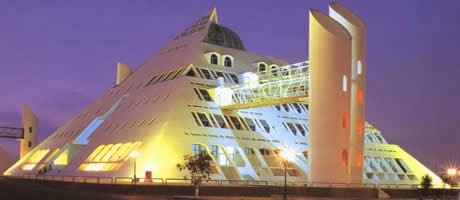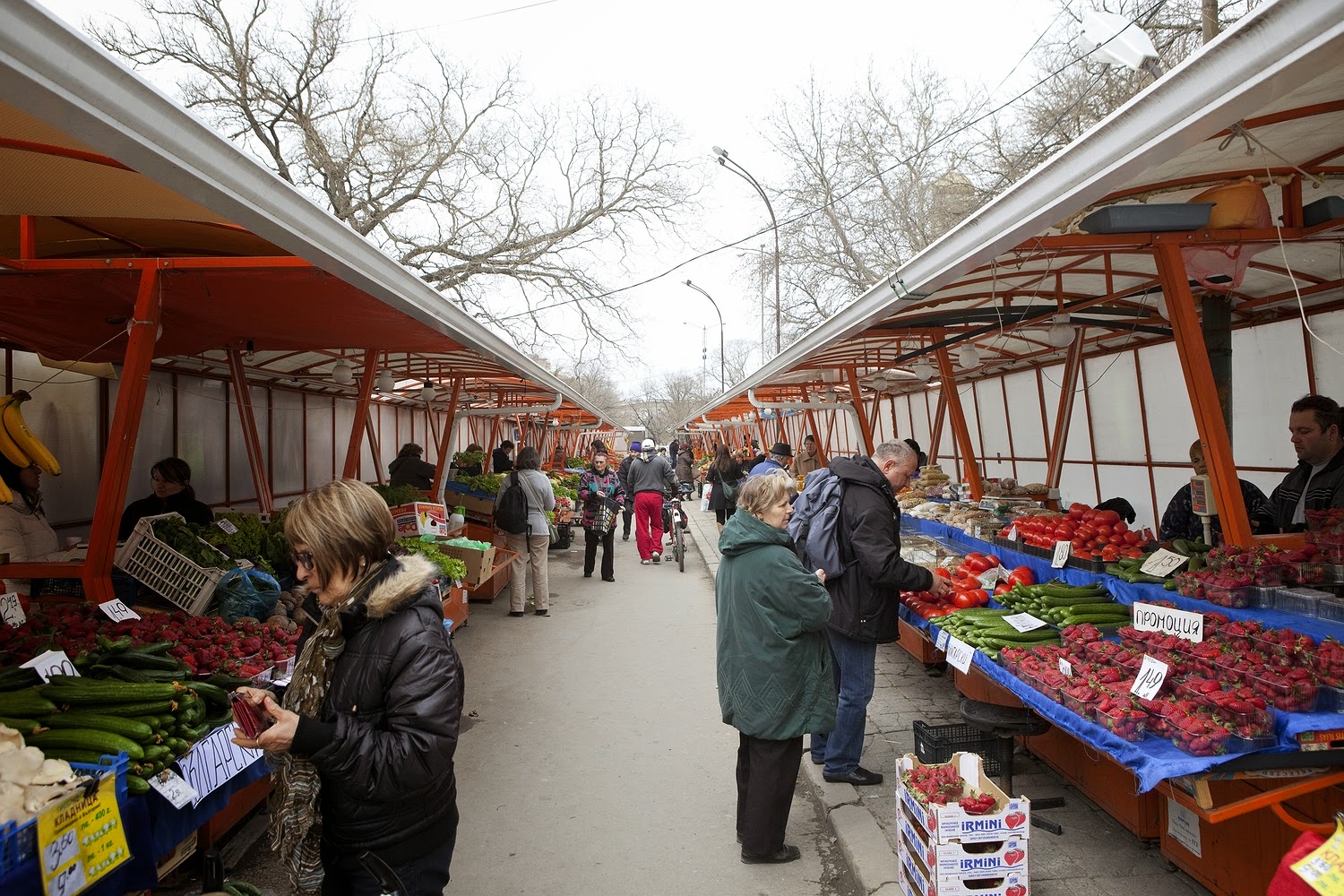Egypt - The Wide Worlds Snaps
Chairman of the Supreme Council of the Armed Forces: Field Marshal Mohammed Hussein Tantawi (2011)
President: Gen. Abdel Fattah el-Sisi (2014)
Prime Minister: Ibrahim Mehlib (interim; 2014)
Land area: 384,344 sq mi (995,451 sq km);
total area: 386,662 sq mi (1,001,450 sq km)
Population (2012 est.): 83,688,164 (growth rate: 1.92%); birth rate: 24.22/1000; infant mortality rate: 24.23/1000; life expectancy: 72.93; density per sq km: 82
Capital and largest city (2009 est.): Cairo, 10,902,000
Other large cities: Alexandria, 4,387,000; Giza, 2,597,600 (part of Cairo metro. area); Shubra el Khema, 1,018,000 (part of Cairo metro. area); El Mahalla el Kubra, 462,300
Monetary unit: Egyptian pound
Turkey - The Wide Worlds Snaps
President: Recep Tayyip Erdogan (2014)
Prime Minister: Ahmet Davutoglu (2014)
Land area: 297,591 sq mi (770,761 sq km); total area: 301,382 sq mi (780,580 sq km)
Population (July 2014 est.): 81,619,392 (growth rate: 1.12%); birth rate: 16.86/1000; infant mortality rate: 21.43/1000; life expectancy: 73.29
Capital (2011 est.): Ankara, 4.194 million
Largest cities: Istanbul, 11.253 million; Izmir, 2.927 million; Bursa, 1.713 million; Adana, 1.468 million, Gaziantep 1.198 million.
Monetary unit: Turkish lira (YTL)
Iran - The Wide Worlds Snaps
Chief of State: Ayatollah Ali Khamenei (1989)
President: Hassan Rouhani (2013)
Land area: 631,659 sq mi (1,635,999 sq km);
total area: 636,293 sq mi (1,648,000 sq km)
Population (2014 est.): 80,840,713 (growth rate: 1.22%); birth rate: 18.23/1000; infant mortality rate: 39/1000; life expectancy: 70.89
Capital and largest city (2011 est.): Tehran, 7.304 million
Other large cities: Mashhad 2.713 million; Esfahan 1.781 million; Karaj 1.635 million; Tabriz 1.509 million; Shiraz 1.321 million (2011)
Monetary unit: Rial
Saudi Arabia - The Wide Worlds Snaps
Sovereign: King Abdullah (2005)
Land area: 829,995 sq mi (2,149,690 sq km)
Population (2014 est.): 27,345,986 (growth rate: 1.49%); birth rate: 18.78/1000; infant mortality rate: 14.58/1000; life expectancy: 74.82; density per sq mi: 31
Capital and largest city (2011 est.): Riyadh, 5.451 million
Other large cities: Jeddah, 3.578 millioin; Makkah (Mecca), 1.591 million
Monetary unit: Riyal
Iraq - The Wide Worlds Snaps
President: Fouad Massoum (2014)
Prime Minister: Haider al-Abadi (2014)
Land area: 167,556 sq mi (433,970 sq km)
Population (2014 est.): 32,585,692 (growth rate: 2.23%); birth rate: 26.85/1000; infant mortality rate: 37.53/1000; life expectancy: 71.42
Capital and largest city (2011 est.): Baghdad, 6.036 million
Largest cities: Mosul 1.494 million; Erbil 1.039 million; Basra 942,000; As Sulaymaniyah 867,000; Najaf 779,000
Monetary unit: U.S. dollar
Yemen - The Wide Worlds Snaps
President: Abdel Rabbo Mansour Hadi (2012)
Prime Minister: Khaled Bahah (2014)
Total area: 203,849 sq mi (527,969 sq km)
Population (2012 est.): 24,771,809 (growth rate: 2.575%); birth rate: 32.57/1000; infant mortality rate: 53.5/1000; life expectancy: 64.11; density per sq mi: 115.7
Capital and largest city (2003 est.): Sanaá, 1,937,451
Other large cities: Aden, 568,700; Hodiedah, 426,100; Tiaz, 317,600
Monetary unit: Rial
The history of Yemen dates back to the Minaean (1200–650 B.C. ) and Sabaean (750–115 B.C. ) kingdoms. Ancient Yemen (centered around the port of Aden) engaged in the lucrative myrrh and frankincense trade.
Syria - The Wide Worlds Snaps
President: Bashar al-Assad (2000)
Prime Minister: Riyad Farid Hijab (2012)
Land area: 71,062 sq mi (184,051 sq km);
total area: 71,498 sq mi (185,180 sq km)
total area: 71,498 sq mi (185,180 sq km)
Population (2014 est.): 17,951,639 (growth rate: -9.73%); birth rate: 22.76/1000; infant mortality rate: 15.79/1000; life expectancy: 68.41; density per sq mi: 306.5
Capital (2011 est.): Damascus, 2.65 million
Other large cities: Aleppo, 3.164 million; Hims, 1.369 million; Hamah, 933,000
Monetary unit: Syrian pound
United Arab Emirates(Dubai) - The Wide Worlds Snaps
President: Sheikh Khalifa bin Zayed al-Nahyan (2004)
Prime Minister: Sheikh Muhammad ibn Rashid al-Maktoum (2006)
Total area: 32,278 sq mi (83,600 sq km)
Population (2014 est.): 5,628,805 (growth rate: 2.71%); birth rate: 15.54/1000; infant mortality rate: 10.92/1000; life expectancy: 77.09; density per sq mi: 256
Capital (2012 est.): Abu Dhabi, 942,000
Largest city: Dubai, 1.978 million
Monetary unit: U.A.E. dirham
Israel - The Wide Worlds Snaps
President-elect: Reuven Rivlin (2014)
Prime Minister: Benjamin Netanyahu (2009)
Land area: 7,849 sq mi (20,329 sq km);
total area: 8,019 sq mi (20,770 sq km)
total area: 8,019 sq mi (20,770 sq km)
Population (2014 est.): 7,821,850 (growth rate: 1.46%); birth rate: 18.44/1000; infant mortality rate: 3.98/1000; life expectancy: 81.28
Capital and largest city (2009 est.): Jerusalem, 791,000 Note: Israel proclaimed Jerusalem as its capital in 1950, but the U.S., like nearly all other countries, maintains its embassy in Tel Aviv.
Other large cities: Tel Aviv-Yafo 3.381 million; Haifa 1.054 million
Monetary unit: Shekel
Jordan - The Wide Worlds Snaps
Ruler: King Abdullah II (1999)
Prime Minister: Abdullah Ensour (2012)
Land area: 34,286 sq mi (88,802 sq km);
total area: 34,495 sq mi (89,342 sq km) excludes West Bank
total area: 34,495 sq mi (89,342 sq km) excludes West Bank
Population (2014 est.): 7,930,491 (growth rate: 3.86%); birth rate: 25.23/1000; infant mortality rate: 15.73/1000; life expectancy: 74.1
Capital and largest city (2011 est.): Amman, 1.179 million
Monetary unit: Jordanian dinar
National name: Al-Mamlaka al-Urduniya al-Hashimiyah
Current government officials
Languages: Arabic (official), English
Palestinian State (proposed) - The Wide Worlds Snaps
West Bank and Gaza Strip
President: Mahmoud Abbas (2005)
Prime Minister: Rami Hamdallah (2013)
Land area: West Bank: 2,178 sq mi (5,641 sq km);
total area: West Bank: 2,263 sq mi (5,860 sq km); Gaza Strip: 139 sq mi (360 sq km)
total area: West Bank: 2,263 sq mi (5,860 sq km); Gaza Strip: 139 sq mi (360 sq km)
Population (2010 est.): West Bank: 2,514,845, Gaza Strip: 1,604,238 (growth rate: West Bank: 2.1%, Gaza Strip: 3.3%); birth rate: West Bank: 24.9/1000, Gaza Strip: 36.2/1000; infant mortality rate: West Bank: 15.4/1,000, Gaza Strip: 17.7/1000; life expectancy: West Bank: 74.8, Gaza Strip: 73.7; density per sq mi: West Bank: 1,164, Gaza Strip: 10,077. NOTE: figures above include approximately 8,000 Israeli settlers who evacuated the Gaza Strip in Aug. 2005.
Capital: Undetermined
Large cities (2003 est.): Gaza, 1,331,600 (metro. area), 407,600 (city proper), Hebron, 137,000; Nablus, 115,400
Monetary units: New Israeli shekels, Jordanian dinars, U.S. dollars
President: Tammam Salam (acting) (2014)
Prime Minister: Tammam Salam (2014)
Land area: 3,950 sq mi (10,230 sq km);
total area: 4,015 sq mi (10,400 sq km)
total area: 4,015 sq mi (10,400 sq km)
Population (2014 est.): 5,882,562 (growth rate: 9.37%); birth rate: 14.8/1000; infant mortality rate: 7.98/1000; life expectancy: 77.22
Capital and largest city (2011 est.): Beirut, 2.022 million
Monetary unit: Lebanese pound
Oman - The Wide Worlds Snaps
Sultan: Qabus ibn Sa'id (1970)
Total area: 82,031 sq mi (212,460 sq km)
Population (2010 est.): 2,967,717 (growth rate: 1.9%); birth rate: 23.9/1000; infant mortality rate: 16.8/1000; life expectancy: 74.1; density per sq mi: 15
Capital (2003 est.): Muscat, 797,000 (metro. area), 54,800 (city proper)
Monetary unit: Omani rial
Arabs migrated to Oman from the 9th century BC onward, and conversion to Islam occurred in the 7th century AD Muscat, the capital of the geographical area known as Oman, was occupied by the Portuguese from 1508 to 1648.
Kuwait - The Wide Worlds Snaps
Emir: Sheik Sabah al-Ahmad al-Jabir al-Sabah (2006)
Prime Minister: Sheikh Jabir al-Mubarak al-Hamad al-Sabah (2011)
Total area: 6,880 sq mi (17,819 sq km)
Population (2014 est.): 2,742,711 (growth rate: 1.7%); birth rate: 20.26/1000; infant mortality rate: 7.51/1000; life expectancy: 77.64
Capital (2011 est.): Kuwait, 2.406 million
Monetary unit: Kuwaiti dinar (KD)
National name: Dawlat al-Kuwayt
Current government officials
Languages: Arabic (official), English
Qatar - The Wide Worlds Snaps
Emir: Sheikh Tamim ibn Hamad Al Thani (2013)
Prime Minister: Sheikh Abdullah ibn Nasser ibn Khalifah Al Thani (2013)
Total area: 4,416 sq mi (11,437 sq km)
Population (2014 est.): 2,123,160 (growth rate: 3.58%); birth rate: 9.95/1000; infant mortality rate: 6.42/1000; life expectancy: 78.38; density per sq mi: 455
Capital (2011 est.): Doha, 567,000
Monetary unit: Qatari riyal
Qatar was once controlled by the sheikhs of Bahrain, but in 1867, war broke out between the people and their absentee rulers.
Bahrain - The Wide Worlds Snaps
King: Hamad ibn Isa al-Khalifah (1999)
Prime Minister: Khalifah ibn Sulman al-Khalifah (1970)
Land area: 239 sq mi (619 sq km);
total area: 257 sq mi (665 sq km)
total area: 257 sq mi (665 sq km)
Population (2014 est.): 1,314,089 (growth rate: 2.49%); birth rate: 13.92/1000; infant mortality rate: 9.68/1000; life expectancy: 78.58
Capital and largest city (2011 est.): Al-Manámah, 262,000
Monetary unit: Bahrain dinar
tags: MIDDLE EAST - The Wide Worlds Snaps,The Wide Worlds Snaps,MIDDLE EAST,MIDDLE EAST beautifull countries, MIDDLE EAST snaps,MIDDLE EAST cities,MIDDLE EAST whole countries,
Tags: MIDDLE EAST - The Wide Worlds Snaps,The Wide Worlds Snaps,MIDDLE EAST,MIDDLE EAST beautifull countries, MIDDLE EAST snaps,MIDDLE EAST cities,MIDDLE EAST whole countries,


























.jpg)



















_-_Egypt-2A-007.jpg)






















